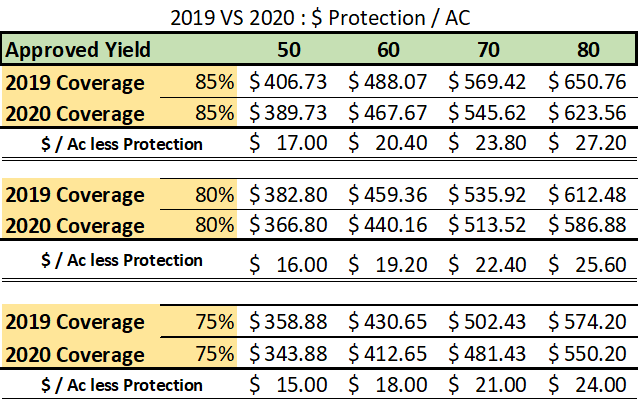This article was originally published on farmdoc Daily by Micah Pope and Steve Sonka.
Throughout much of agriculture’s history, farmers...
|
March 13, 2020 This article was originally published on farmdoc Daily by Micah Pope and Steve Sonka. Throughout much of agriculture’s history, farmers... |
|
March 06, 2020  The 2020 crop insurance deadline of March 15th is quickly approaching. Before this date, a producer needs to declare the type of policy they would like to purchase or update policy option from last year. Recently, the spring 2020 price was set for soybeans at $9.17, a reduction from the 2019... The 2020 crop insurance deadline of March 15th is quickly approaching. Before this date, a producer needs to declare the type of policy they would like to purchase or update policy option from last year. Recently, the spring 2020 price was set for soybeans at $9.17, a reduction from the 2019... |
|
February 29, 2020 With a late harvest and very minimal tillage accomplished this past fall, there could be a strong case for spring herbicide burndown to allow for clean fields during soybean planting. Many of the winter annual species emerged during the fall and will grow aggressively in warm spring temperatures. A field can look clean now but get out of control very fast, causing issues with soil temperature, soil moisture and jeopardizing seed to soil... |
|
February 27, 2020 With the 2019 growing season behind us, it’s time to look at crop production statistics for Illinois from last year. With an average yield of 54 bushels per acre and a total production of 532 million bushels of soybeans, Illinois growers overcame a challenging year to remain the leading soybean state in the nation in 2019. The prairie state planted 9.95 million acres and harvested 9.86 million. Some areas, particularly in northern Illinois,... |
|
February 26, 2020 A lot of time is spent by growers selecting seed for the coming year, determining proper field placement and managing agronomic decisions. Industry also spends a great deal of time producing ample high-quality seed. When it comes to validating what a grower is getting, it’s important to review the soybean seed tag for each soybean variety. Seed tags are a great resource for a grower to better understand what they are planting. For example,... |
|
February 25, 2020 Soil samples provide landowners a gauge or a trend of the potential nutrient availability for the coming crop. Typically, this information signals areas of a field that exceed or fall short of the field’s current average fertility programs. High zones of fertility could suggest that a crop is not removing what it was given. Likewise, a zone of low fertility could suggest that a crop is removing 100% or more of the nutrients it was given.... |